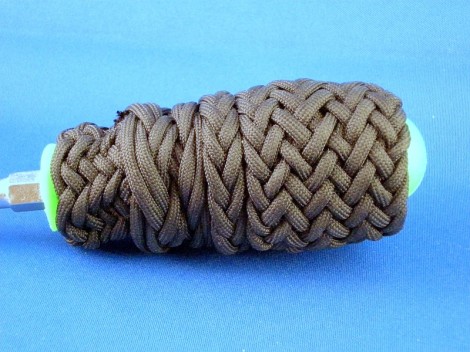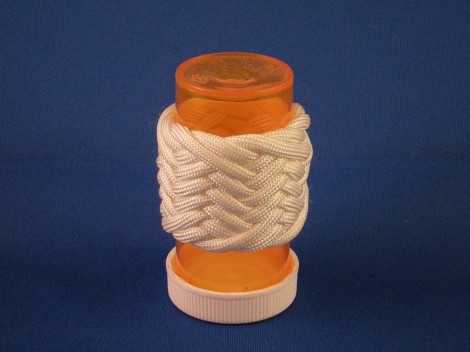We live in world which is a marvel of mass-produced, affordable goods. As in all things, there are levels of quality available for differing levels of cost. The problem is they make things to fit the “average man” to get the most sales per unit of investment. What happens if you fall outside that average range in some way? All these marvels of the modern world don’t fit you. You can either spend astronomical sums buying custom made goods — or you can buy off the rack and customize them yourself. If you aren’t wealthy, or have a frugal streak, there is only one answer: buy off the rack and make them fit.
The knots used to make this screwdriver fit my hand are:
If you look at the picture at full size you will see it is made up of a stack of Turk’s Head variants. When I was clapping those knots on the handle I hadn’t even thought about a blog. I would try fit the handle and note where it didn’t fill my hand, add a knot in the worst spot, try fit, repeat til happy. Because of this I didn’t keep notes, so some of this is a best guess using an admittedly faulty system.
The handle at the start was about 1″ wide on the major part of the grip. After adding the knots it is just over 2″. The large knot that is on the butt/right end is a Gaucho knot of 2 passes, with 17 Leads X 15 Bights. Like all the knots on this project, it is done in black paracord. Paracord because it is very durable, and I keep reels of it. Black because it is on a work tool and black doesn’t show soiling or stains as much as other colors do.
Just to the left of the Gaucho knot is a Spanish Ring knot — the thinnest Gaucho knot as per Mr. Tom Hall. It is there to smooth out the bump where the edge of the large Gaucho knot ended. The step down to the next lower knot was too abrupt to give a comfortable grip.
If memory, prompted by that part of the knot I can see, serves me, the knot beneath those already named is a Turk’s Head. I think it has 13 Leads X 4 Bights, doubled.
Beneath all these, and visible as the last knot at the left end of the grip, is a Herringbone knot. It has 12 Bights on the exposed end. The count of the Leads is lost under the other knots. It served to fill in a dip in the original grip, and to add size and increased friction on that edge of the handle.
I seem to recall there being another small knot under there somewhere, to even out the profile of the grip. What that knot is will be left as an exercise for the reader.
The end shape, with a taper going from just over 1″ to just over 2″ is nearly perfect for my hands. I can put a lot more torque into the fastener than I could with the factory grip. It is also much easier for my battered and dinged up hands to hold.
Thank you for coming by my site. I appreciate your visits, and any comments you care to leave. Come back again; I don’t post every day, but I try to put something up often enough so most of your visits will be rewarded:
William







